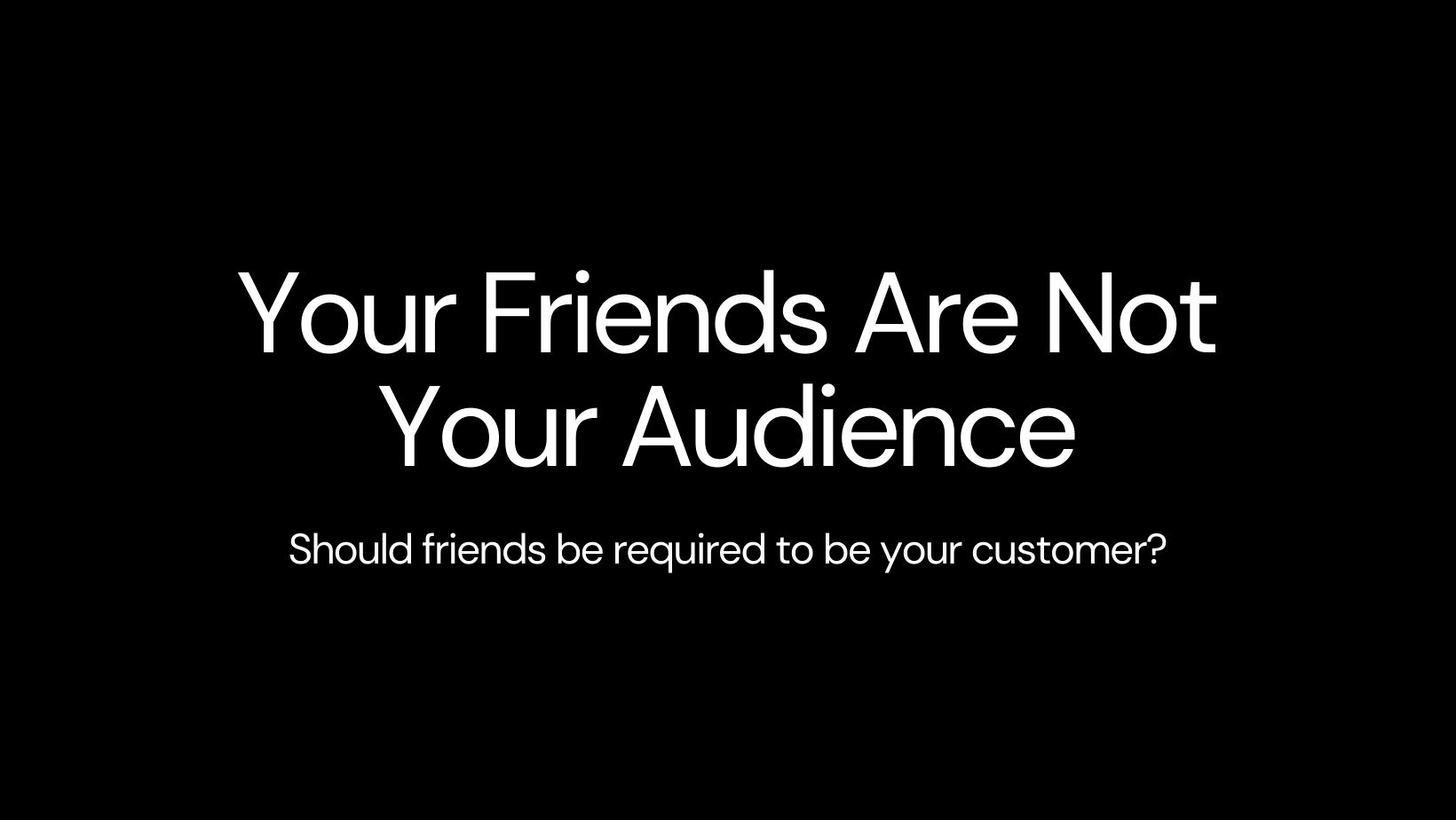Why does it feel like a random stranger on the internet supports you more than your friends and family ever had? It took me years to understand that your friends lack of support should not be an indicator of their lack of support in other areas of your life. The truth is, your friends should not be required to be your only customer.
Most of us, if we’re lucky, have a really great supportive friend group, one we can go to for specific things or many things. Most of us are fortunate if we have other entrepreneurial-minded friends in our group with whom we can bounce ideas off. However, it’s crucial to realize that having friends and serving your ideal customers are not the same thing.
The initial expectation for many of us embarking on entrepreneurial journeys is that our friends and family will naturally become our first customers, our most vocal advocates. The reality, however, often paints a different picture. It’s not a lack of support but a misunderstanding of roles.
It’s not a lack of support but a misunderstanding of roles.
Our loved ones support us in ways that transcend the transactional nature of customer and seller. If we are lucky, our loved ones are there for the late-night pep talks, the early-morning doubts, and the celebratory moments that mark our path.
Business versus Personal Relationships
Realizing that our friends and family are not our primary audience can initially feel like a betrayal of expectations. However, it’s an opportunity to refine our understanding of business relationships versus personal relationships. The support of friends and family is invaluable, but their role is not to be the primary lifeline of our ventures. Instead, their encouragement and belief in us fuel our motivation to reach those who need what we offer.
While our friends and family’s support is foundational, our growth depends on reaching out to those who are actively seeking the solutions we provide.
If your friends are your only customers, that’s a problem. The true success of a profitable business is when your offer is being purchased based on a need or want, rather than a personal relationship.
The Importance of Defining Your Target Audience
Identifying and understanding your target audience is foundational to your business strategy. Your real audience is defined by specific characteristics and needs that your product or service addresses. Unlike friends, they seek the value your business offers because it solves a problem or fulfills a need for them, not just because they want to support you.
Strategies for Identifying and Engaging Your True Audience
- Market Research: Conduct thorough research to identify the demographics, interests, and behaviors of your potential customers. Tools and surveys can offer insights beyond your immediate circle.
- Customer Personas: Develop detailed personas of your ideal customers. This helps in tailoring your marketing strategies and product development to meet the actual needs of your audience.
- Feedback and Iteration: Actively seek feedback from your target market and be open to iterating your product or service. Unlike feedback from friends, this feedback is critical in refining your offering to better suit your market.
- Engagement Beyond Your Circle: Utilize digital marketing and social media to reach and engage with your target audience. Effective use of these channels helps in attracting those who are genuinely interested in your offering.
The Value of Friends as Supporters, Not Customers
While your friends may not be your target audience, their role in your entrepreneurial journey remains significant. They provide emotional support, offer feedback, and can help spread the word about your business in their networks, potentially reaching your actual audience. The key is to appreciate their support while recognizing the importance of reaching beyond your immediate circle to achieve sustainable business growth.
Pro-Tip
- Make it easy for your friends to share: whenever you have a new product launch, make it easy for those who want to support your to support you. What does that look like? For me, I write out the copy, the images, share the website links and draft the emails. I create all of this content and put it inside a kit that I can share to my friends who are okay with sharing on their social platforms. It’s important you make sure it’s not required or that you expect everyone to share but if they do, you should be thankful.







Leave a Reply